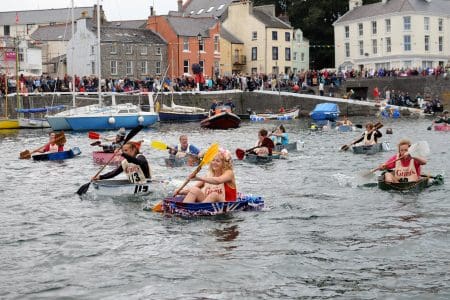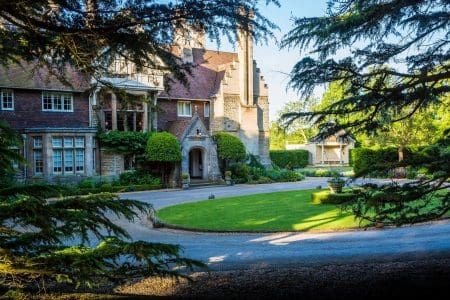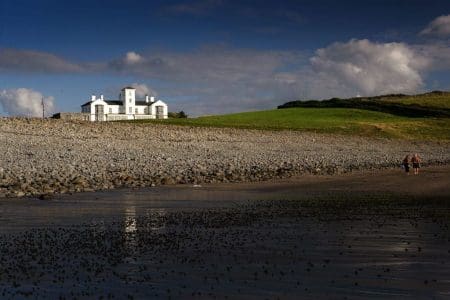Set in the Irish Sea sandwiched between Ireland and Britain, the Isle of Man has a long history with many traditions and unusual folklore. Discover about the history and customs of the Isle of Man.
History of the Isle of Man
First, let’s clarify a couple of questions people often ask. Is the Isle of Man part of the UK? And is the Isle of Man a country? The answer to both questions is ‘no’.
The Isle of Man is a Crown Dependency within the British Isles. This means that although it swears allegiance to the British sovereign, Charles III, who is the Lord of Mann, the island has its own separate government and laws. It is neither an independent country nor is it part of the UK. Charles is represented by the Lieutenant Governor.
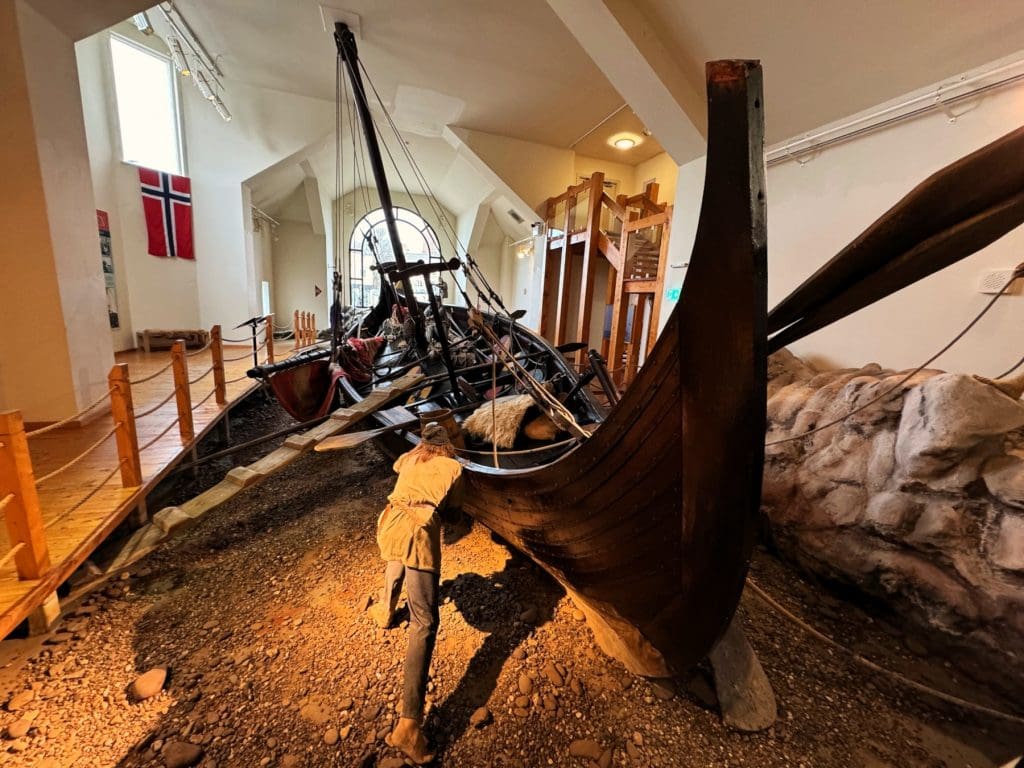
The Isle of Man has been populated since at least 6,500BC. The Manx language dates back to the 5th century AD when Irish missionaries settled here following the doctrine of St Patrick. The Norse occupied the island in the 9th century, until 1266 when the island was sold to Alexander III of Scotland. Following a period of alternating rule by the kings of Scotland and England, the island eventually became a feudal lordship of Richard II, the King of England in 1399. It has never been part of Great Britain or the UK.
You can discover all about the history of the Isle of Man at the Manx Museum in Douglas or the excellent House of Manannan museum in Peel.
Unusual Facts about the Isle of Man
Did you know that the Bee Gees were born on the Isle of Man? Or that the island’s steam locomotives were the inspiration for Thomas the Tank engine?
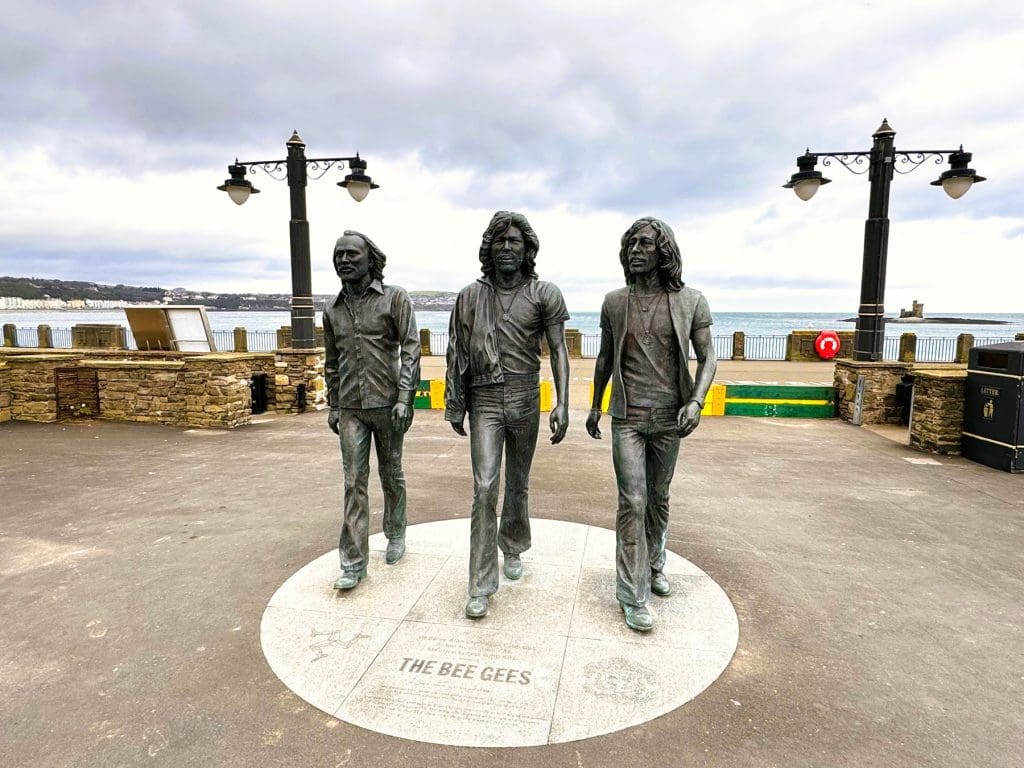
The Isle of Man has the oldest continuous Parliament in the world – The Tynwald. It was also the first nation to give women the vote – in 1881, a quarter of a century before the UK. However, it was only for unmarried women.
In 2016, the Isle of Man also became the first entire nation to be recognised as a UNESCO Biosphere Reserve, for its sustainable development.
Although the island embraces a laidback attitude to life, there is no Isle of Man speed limit, although there are speed controls in towns. Perhaps the most famous motorbike race in the world the Isle of Man TT came to the island in 1904, due to the speed limits imposed on cars (20mph) in the UK – and yes it was originally for four rather than two wheels. Unfortunately, there have been a number of Isle of Man TT deaths over the years, but this has not diminished its popularity.
Finally, Joseph Pilates was interned on the Isle of Man during World War I at Knockaloe. It was while observing the tail-less Manx cat that he came up with the idea for Pilates.

Customs of Isle of Man
The Isle of Man is full of traditions and customs. The first of which is that every time you pass over the Isle of Man Fairy Bridge you have to say hello to the fairies. Should you fail to do so, you will suffer from bad luck.
Another tradition is that you are not allowed to refer to the rat by name. Manx people will call the rodent the ‘long tail’, so as to avoid bad fortune.
The Isle of Man is possibly named after Manannán or Manann, a Manx and Celtic god of the sea who protected the island until banished by St Patrick as told in the traditional ballad Manannan Beg Mac y Lir. Manx still pay worship to Manannán by giving him bundles of rushes. You will sometimes see the island written as the Isle of Mann, and Charles III is the Lord of Mann not Man.
There is also the story of a talking mongoose called Gef, who lived in a remote part of the island in the 1930s. This has been made into the film Nandor Fodor and the Talking Mongoose starring Simon Pegg.
Isle of Man Flag
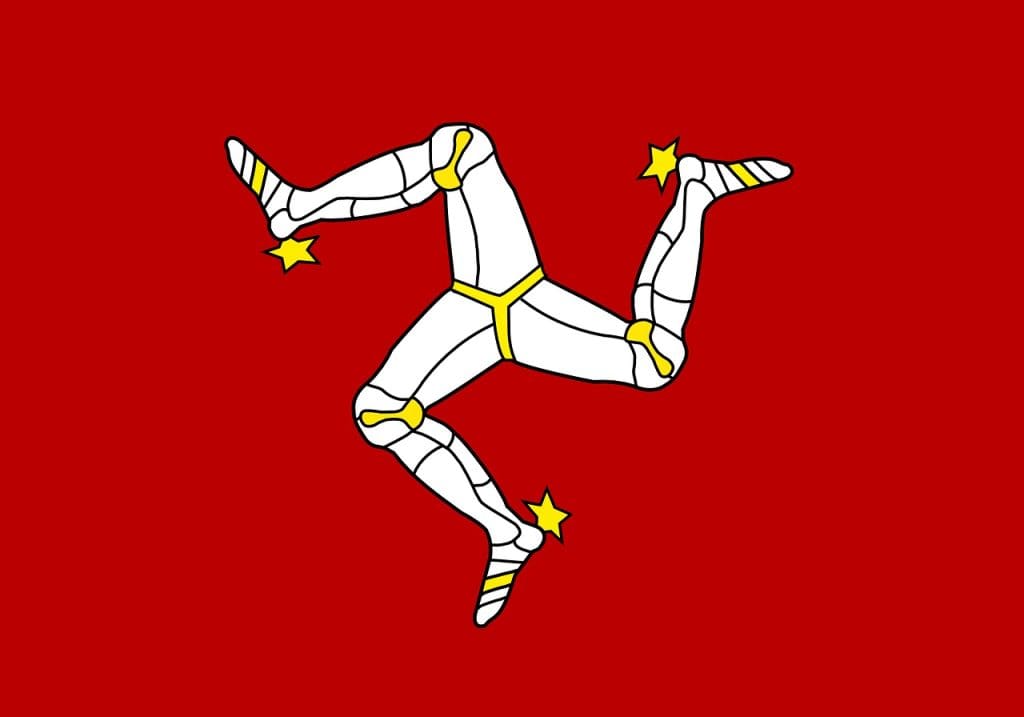 The unique Isle of Man flag is a triskelion, consisting of three legs with gold spurs, set on a red background. It has been the official flag of the island since 1932 and is based on the Manx coat of arms, which is from the 13th century.
The unique Isle of Man flag is a triskelion, consisting of three legs with gold spurs, set on a red background. It has been the official flag of the island since 1932 and is based on the Manx coat of arms, which is from the 13th century.
Things To Do on the Isle of Man
For further information about the legends, culture and heritage, we suggest you go to the Visit Isle of Man website or you can try our 13 Things To Do on the Isle of Man.
Mai image of Peel Castle, courtesy of Visit Isle of Man.
